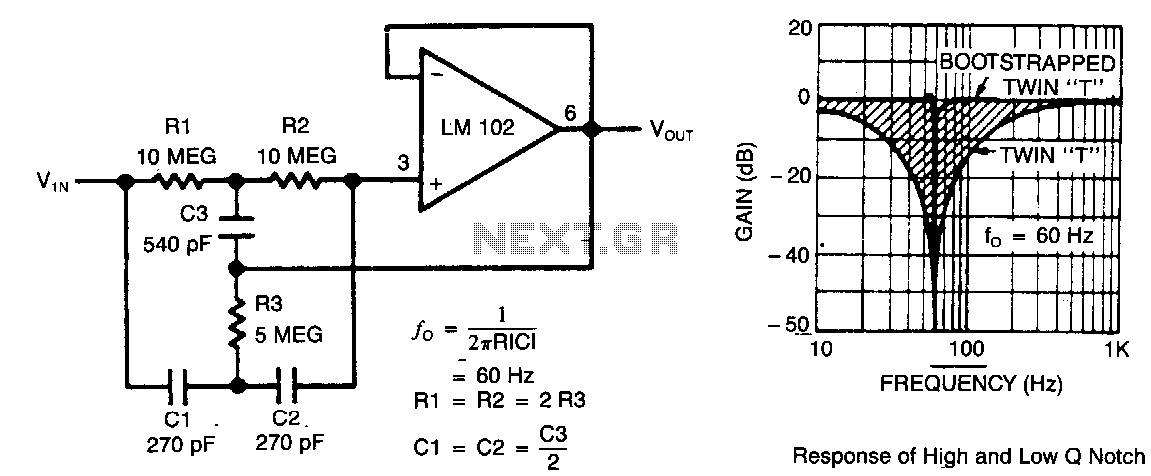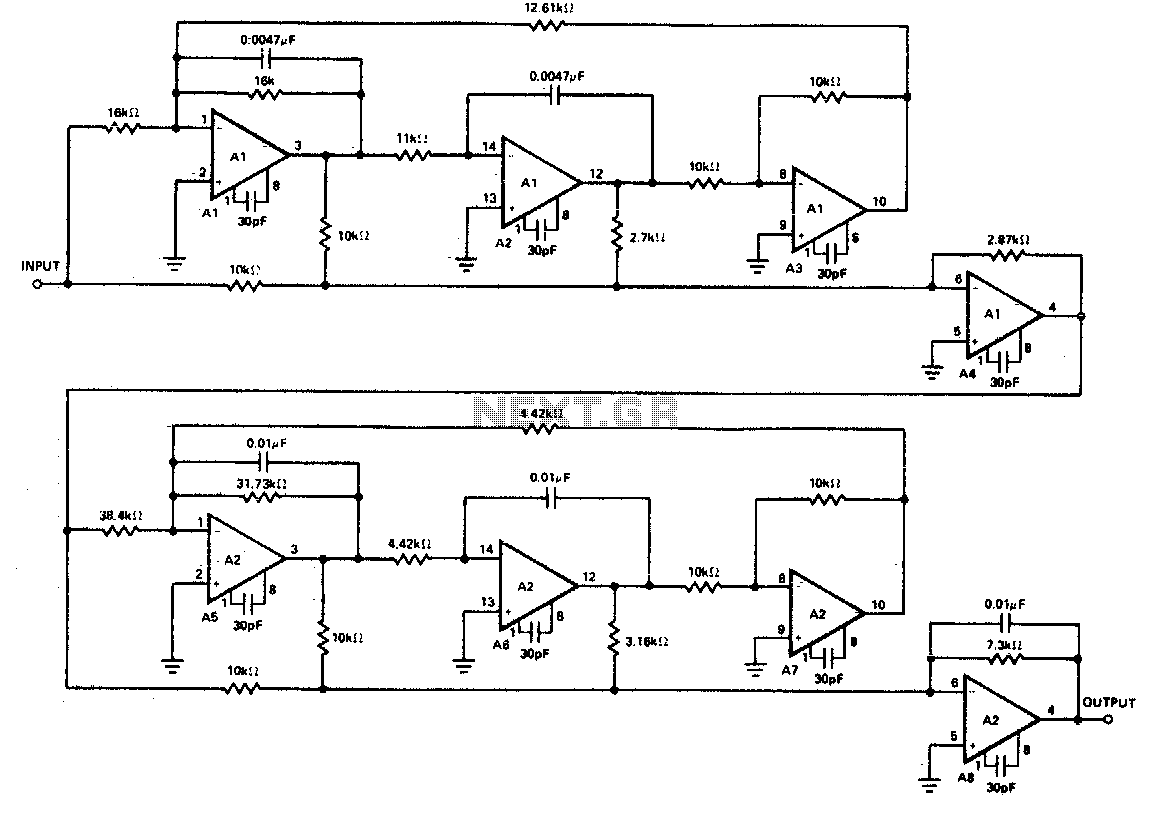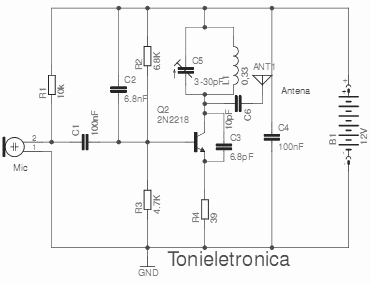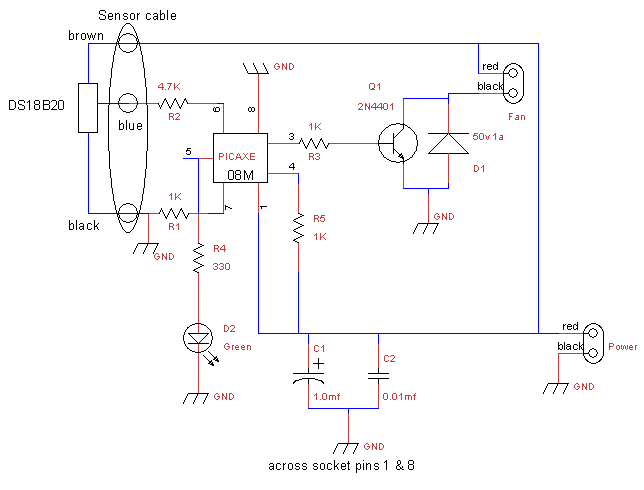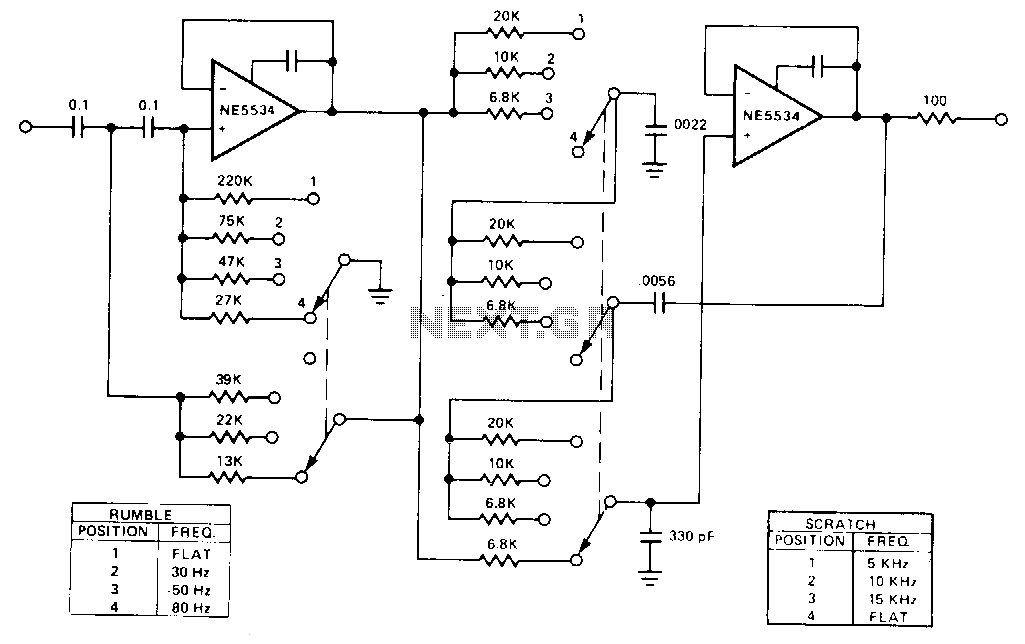
Audio high-pass filter
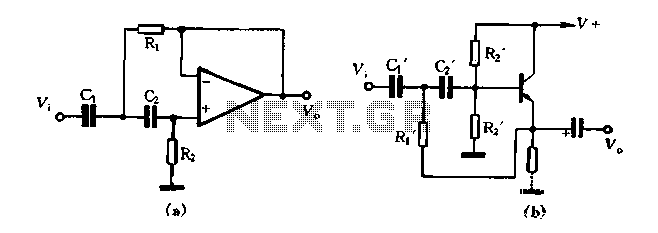
Figure 1-102 illustrates a high-pass filter in part (A). If C1 and C2 are taken as equal and R1 is set to 1/2, then the crossover frequency is given by fH = 1/(2√(2R1C1)). In part (B), if C1 and C2 are equal and R1 is set to 1/4 of R2, the crossover frequency is fH = 1/(2√(R1C1)).
The high-pass filter depicted in Figure 1-102 serves to allow signals with a frequency higher than a certain cutoff frequency to pass through while attenuating signals with frequencies lower than the cutoff. The configuration in part (A) demonstrates a scenario where capacitor values C1 and C2 are equal, and resistor R1 is set to half the value. This results in a specific crossover frequency, calculated as fH = 1/(2√(2R1C1)). This equation indicates that the cutoff frequency is inversely proportional to the product of the resistance and capacitance values.
In part (B) of the figure, the arrangement changes slightly, with R1 being one-fourth the value of R2. Here, the relationship between the components continues to dictate the crossover frequency, which is expressed as fH = 1/(2√(R1C1)). This adjustment demonstrates how varying the resistor values can significantly impact the filter's performance and the frequency at which it begins to attenuate lower frequencies.
Design considerations for high-pass filters include selecting appropriate values for the resistors and capacitors to achieve the desired cutoff frequency, ensuring that the filter meets the specific application requirements. Additionally, the quality of the components used can affect the filter's performance, including its frequency response and signal integrity. Overall, the design and implementation of high-pass filters are crucial in various electronic applications, including audio processing, signal conditioning, and communication systems.Figure 1-102 high-pass filter in FIG. (A), and if we take C1 C2, R1 1/2, then the crossover, H 1/2 root of 2 R1C1. For Figure (b), if take C1 C2, R1 1/4R2, its crossover fH 1/2 root 2 R1 C1
The high-pass filter depicted in Figure 1-102 serves to allow signals with a frequency higher than a certain cutoff frequency to pass through while attenuating signals with frequencies lower than the cutoff. The configuration in part (A) demonstrates a scenario where capacitor values C1 and C2 are equal, and resistor R1 is set to half the value. This results in a specific crossover frequency, calculated as fH = 1/(2√(2R1C1)). This equation indicates that the cutoff frequency is inversely proportional to the product of the resistance and capacitance values.
In part (B) of the figure, the arrangement changes slightly, with R1 being one-fourth the value of R2. Here, the relationship between the components continues to dictate the crossover frequency, which is expressed as fH = 1/(2√(R1C1)). This adjustment demonstrates how varying the resistor values can significantly impact the filter's performance and the frequency at which it begins to attenuate lower frequencies.
Design considerations for high-pass filters include selecting appropriate values for the resistors and capacitors to achieve the desired cutoff frequency, ensuring that the filter meets the specific application requirements. Additionally, the quality of the components used can affect the filter's performance, including its frequency response and signal integrity. Overall, the design and implementation of high-pass filters are crucial in various electronic applications, including audio processing, signal conditioning, and communication systems.Figure 1-102 high-pass filter in FIG. (A), and if we take C1 C2, R1 1/2, then the crossover, H 1/2 root of 2 R1C1. For Figure (b), if take C1 C2, R1 1/4R2, its crossover fH 1/2 root 2 R1 C1
Warning: include(partials/cookie-banner.php): Failed to open stream: Permission denied in /var/www/html/nextgr/view-circuit.php on line 713
Warning: include(): Failed opening 'partials/cookie-banner.php' for inclusion (include_path='.:/usr/share/php') in /var/www/html/nextgr/view-circuit.php on line 713
